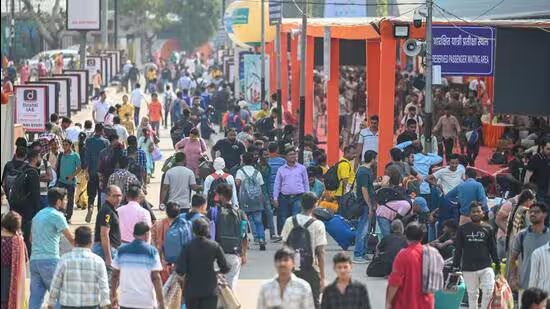The Indian Railways has operationalised 58 special trains from Delhi, including 28 from Friday, to facilitate travel during the Chhath Puja festivities.
As part of its efforts to create a festive atmosphere, the Railways has also started playing Bhojpuri Chhath songs at key railway stations across the country.
“The Northern Railway’s Delhi Division successfully operated 28 Special Trains today from the Delhi area, following the 30 Special Trains run yesterday. This deployment is focused on ensuring Chhath devotees reach their homes safely and comfortably,” the Railways said in a press release.
Since October 1, the government has operationalised more than 12,000 special trains to accommodate the festive rush. The latest set of trains will depart from New Delhi, Anand Vihar, Shakur Basti, Delhi Junction, Hazrat Nizamuddin, Shamli and Rohtak.
This comes after the government announced on Thursday that it would run 1,500 special trains across the country for the occasion.
“Major railway stations like New Delhi, Anand Vihar Terminal, Nizamuddin and Ghaziabad in the Delhi area are playing traditional Bhojpuri Chhath songs over the station announcement systems…As trains arrive at stations, passengers are greeted by these familiar tunes, instantly transforming the station’s atmosphere and connecting travelers with the spirit of the festival,” the statement said.
Other stations — including Patna, Danapur, Hajipur, Bhagalpur, Jamalpur, Sonpur, Chhapra, Simultala, Pt Deen Dayal Upadhyaya Junction, Jhansi, Shimla, Amb Andaura, Amritsar, Ludhiana, Dhandari Kalan, Jodhpur, Phagwara, and Kolkata — are also playing Bhojpuri songs to mark the occasion.
This year, Chhath Puja will be celebrated from October 25 to October 28.
Images are for reference only.Images and contents gathered automatic from google or 3rd party sources.All rights on the images and contents are with their legal original owners.

